Welcome to the second in our series of articles sharing how we here at Oakwood Park came to Regenerative land care!
Now you need to appreciate, that Husband Gavin is a man of action. Usually when a problem presents itself, he moves straight into researching solutions; and before you know it, he’s fixed it. Done something. Built, tested, deployed or prototyped SOMETHING to fix it.
So months of research is not normally his thing. But when it came to Natural Sequence Farming, this was so far out of our experience we couldn’t find a starting point.
We loved the idea of a low-input system that uses on-farm resources. This is a well-established permaculture and sustainable farming concept too of course, but Peter Andrew OAM‘s insights about using nature’s free resources ie WEEDS took that to another whole level. But we certainly had no shortage of them. And then there were other things.
Planting willows? Well what does one do there? You can’t buy them in little seedling trays. And anyway the whole thing is not to do that until you’ve built swales.
Swales on an 11 acres intensive horse holding? How on earth do you do that? Horses are notorious for breaking fetlock bones on a mere dent in the ground, let alone putting a whole swale in their paddock. All well and good in big farm paddocks, but in smaller confined paddocks surely that’s just asking for trouble.
And our hills are steep. Really steep. Our agistment clients don’t even like putting their horses on our hills. They use the flat paddocks at the top. It’s my precious horses on the slopes.
And then, because our hills are steep, erosion is dangerous. Even our conventional landcare experts always drilled into us the risks of any water diversions, and raceway placement and design, and tree row placements, and…well you get the gist. Water running down a steep slope causes erosion, and human interventions often make it worse not better. So we really were afraid to start. If we dug trenches and got the contours wrong, we imagined both seeing all our topsoil race away in raging torrents scouring 6-foot-deep scars across our hillside, while bringing down the wrath of the local soil management board.
What about the equipment? We didn’t have any apart from our small and simple tractor. The cost of hiring earthmoving or trenching equipment for a slow, carefully executed experimental swale test was prohibitive. Our hard compacted soils made our backs ache even thinking about doing it by shovel. In fact, we didn’t even think about doing it by shovel. That was just Not An Option!
And so nothing changed. We talked, agonised, planned, walked paddocks, but changed nothing.
The main concept was that by building up with haybales, rather than digging down for a swale, we could easily change/correct it if water began running the wrong way across those steep slopes. It seemed a more forgiving way to start. And it was certainly more affordable. We would use spoiled hay that would be maybe give-away, or at least very cheap to buy from farmers who didn’t want it.
We also decided to hot-tape it to keep the horses out. Hot-tape is just a very portable form of electric fencing that can be quickly installed and moved/changed anytime. With hot-tape keeping horses out, we could plant trees (Willows!) in behind the contours created by this haybale leaky weir. And even if horses did break into it (they routinely do that!), the most they’d do would be trip on a nice soft haybale. Not put their precious foot down a trench.
Sourcing some cheap hay didn’t take too long. So soon enough we were out on a sunny Autumn afternoon, laying haybales in a long continuous line along the contour of one hill.
We used our eyes rather than equipment – adjusting the bales as we went to get a smooth line across the hill, accounting for the small variants we observed where the hillside swelled out slightly as a crest, or dipped in just a little to form a small depression or fold in the slope. We ended it at a point that the overflow would spill out onto one of those small crests rather than gullies. We also noticed that currently, those crests were heavier in their cover of the undesirable Capeweed, which we took as some confirmation that these areas may indeed be getting slightly less use from the rainfall, with increased runoff/drainage and leaching on those crests; while the small gullies were a bit stronger in grass cover. It was challenging but rewarding, and the sense of satisfaction in beginning to read our slope and work with the contours was immense. Here’s some photos of the work in progress (well supervised by our ever-present Labrador, Bailey).
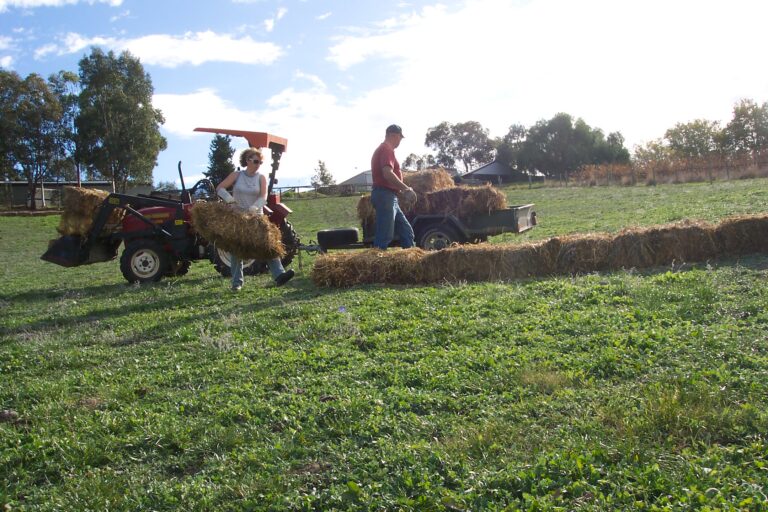
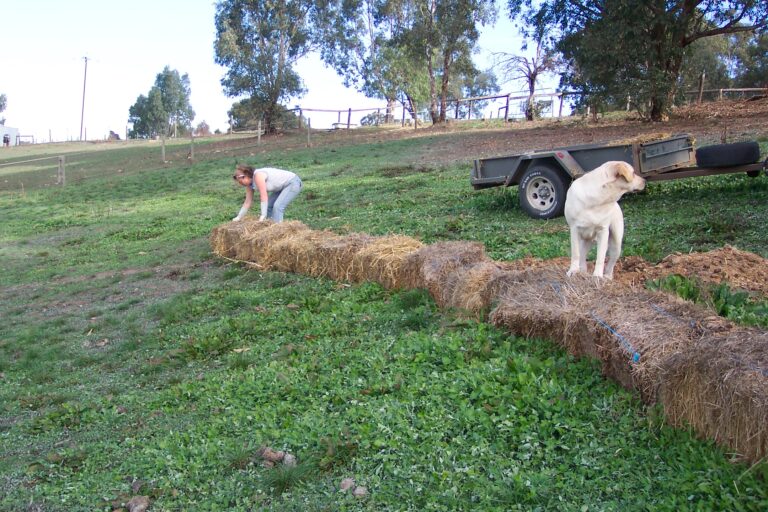
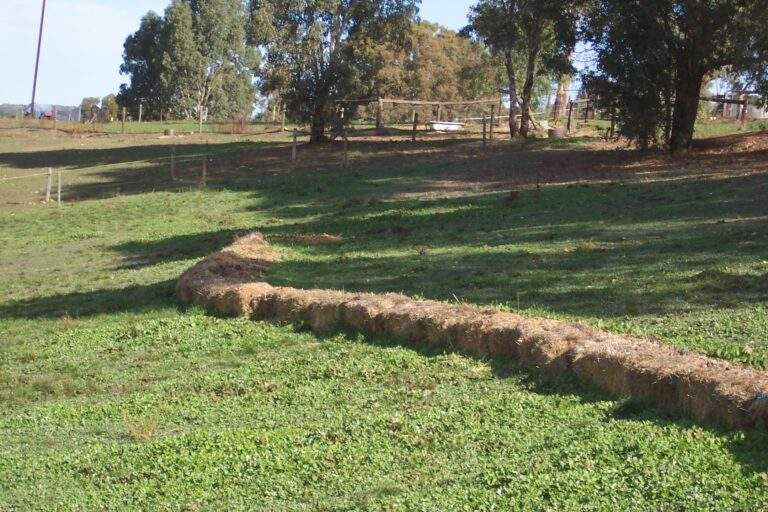

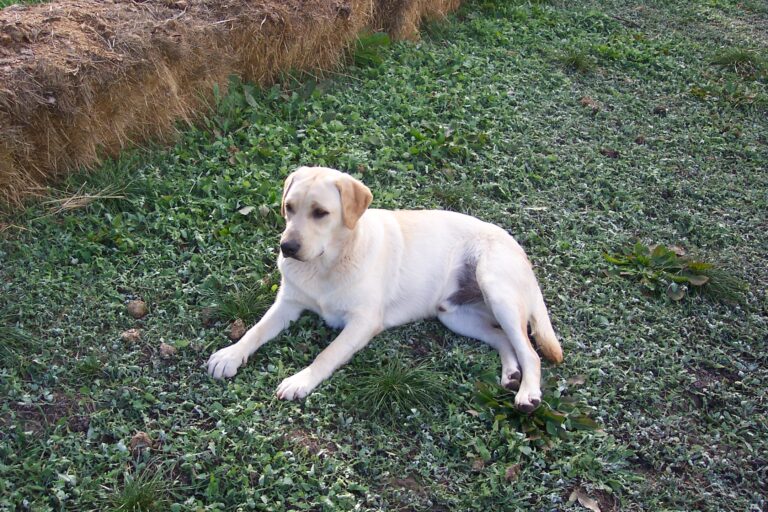

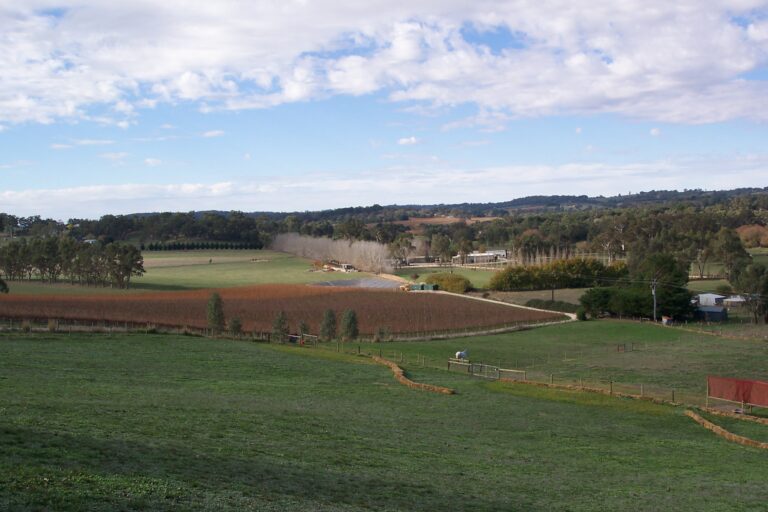
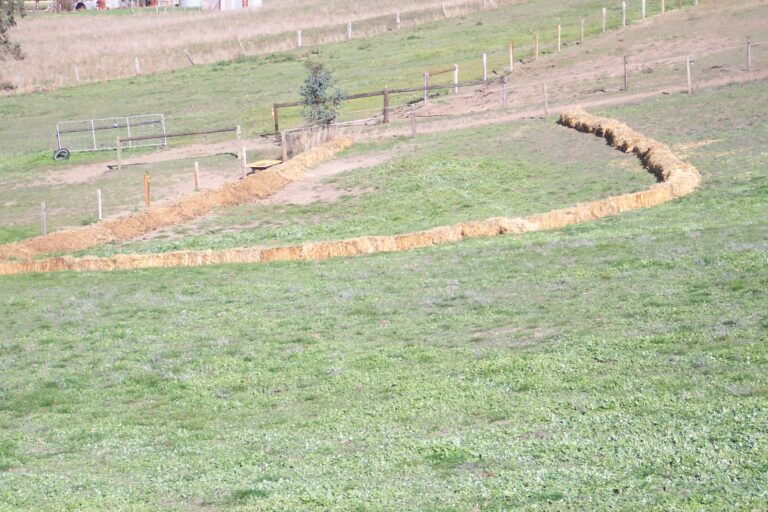



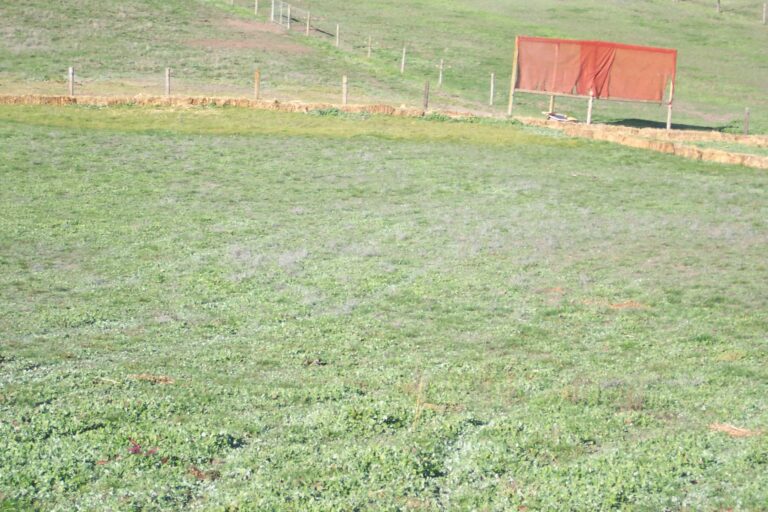


It occurred to us then, we could do more. We run stables. We have literal HEAPS of compost. So we filled our tractor bucket and filled the back (top or higher side) of the haybales all the way along with compost. We knew this would give our trees a real boost and an ideal environment to get started.


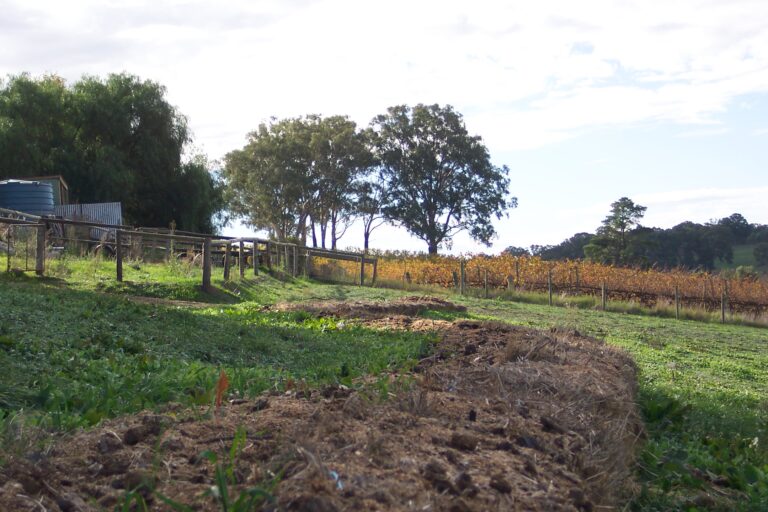

Reading Back from the Brink, we recognised a small section of our paddock at the break of slope (where the hillside flattens out to become the floodplain) that had for quite some time not been holding pasture well. Peter’s book explained the natural movement of saline water at the break of the slope, and how this can manifest in higher salt levels in the top soil levels if the natural plant cover has been disturbed so that it no longer is holding a fresh-water lens on top of the salt.
The description fit this site exactly. So we started with our haybale swale/leaky weir following the contour on a big U-shaped curve around the small gully that sat above this area (see photo). The idea was that this would slow the water coming off the hill, prevent it flowing straight down the gully and away, hold it onsite longer to support stronger vegetation which would eventually reinstate the freshwater lens. We ran 2 lines (contours) and planted into both, a mix of indigenous (local) natives (Callistamon, Bursaria, one Manna gum for the koalas), Victorian natives (Swamp Sheoak, one Swamp Gum for the koalas), and ornamentals (willows, albezia, oak, maple).









This approach worked beautifully. It was quick – just a couple of days over a couple of weeks. It was effective – when the rains came, the water slowed, we could see sediment becoming trapped and building a natural kind of swale behind the haybales; the trees and covering grassesflourished right through summer; the haybales proved to be an immense water store in their own right, holding water many times their weight for weeks into summer, while protecting the water deeper in the soil right through to the next winter.
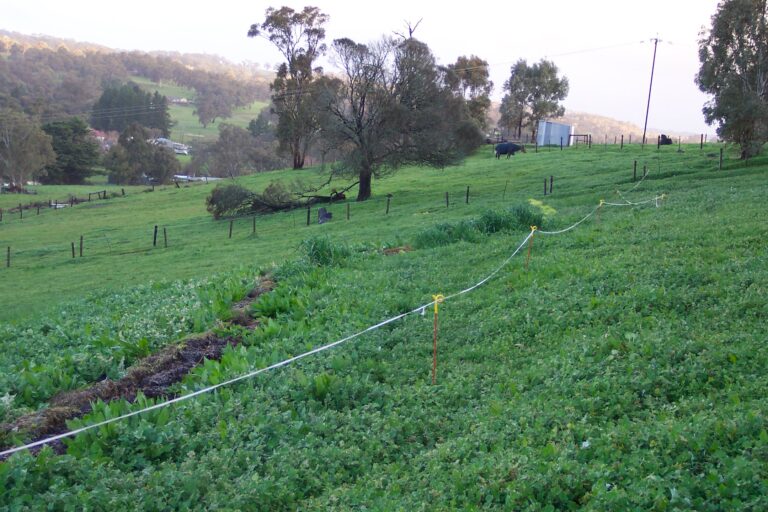

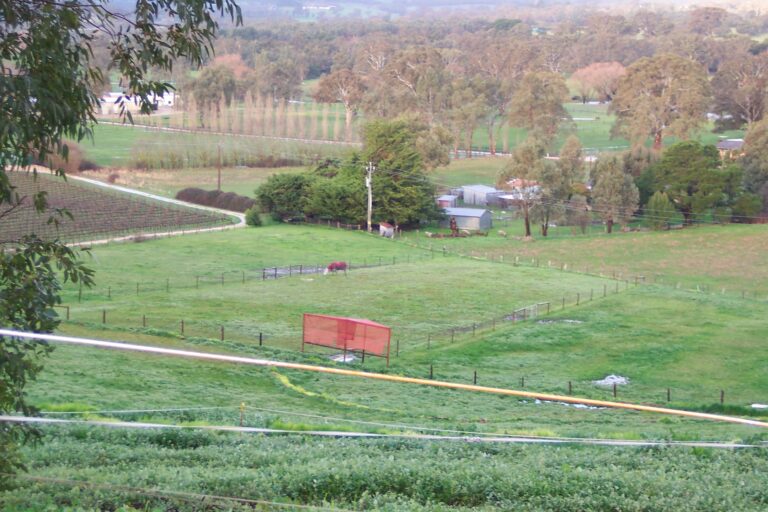



The water sitting behind the contour at the break of slope was ankle deep for weeks at a time through winter and spring. The grass grew chest-high in that retained water; the birds flourished in there, butterflies and frogs too. Earthworm finds soared. And that salt-affected flat ground below the contours grew strong grass for the first time since we bought the farm in 2003.
We did it. We had a go. We applied some lateral thinking. We made the most of some local resources as well as our on-site ones. And we made a visible difference in just one growing season. Our confidence soared. We still weren’t entirely sure if our haybale approach was taking things too far from Peter’s concepts to be really called Natural Sequence Farming, but we had made a start and our land was thanking us for it.
Comparison pics from this season (2019):
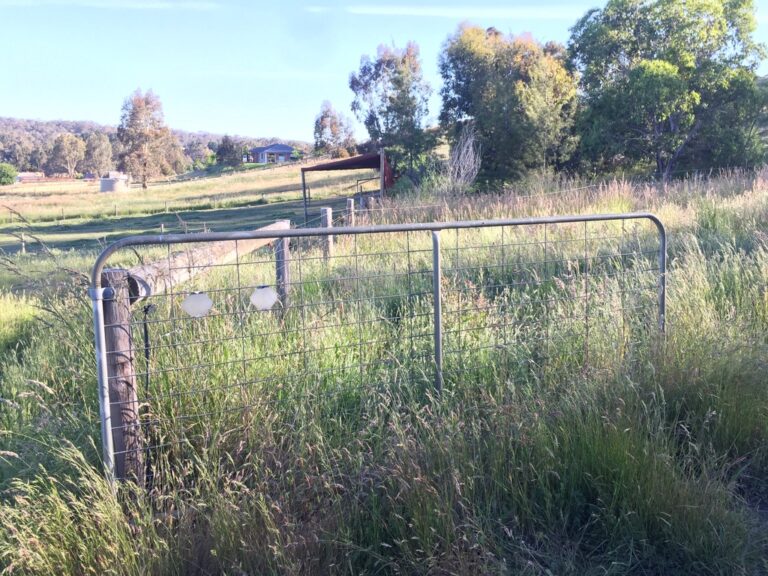

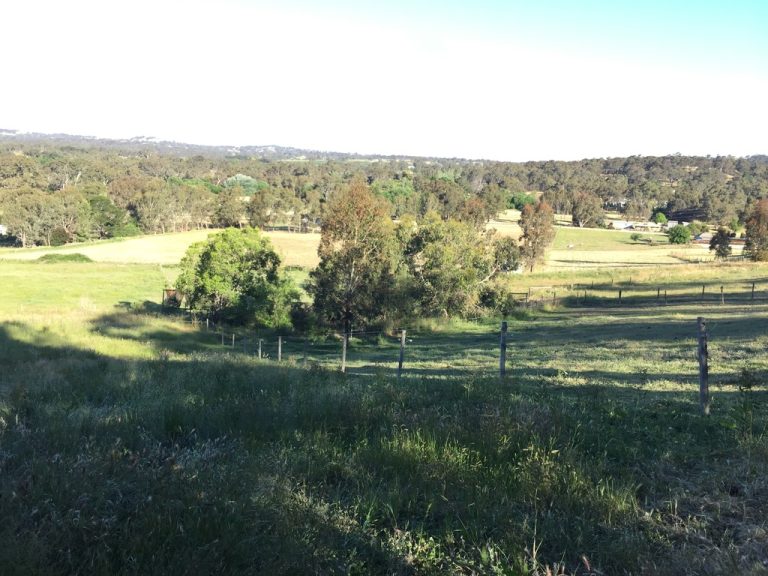

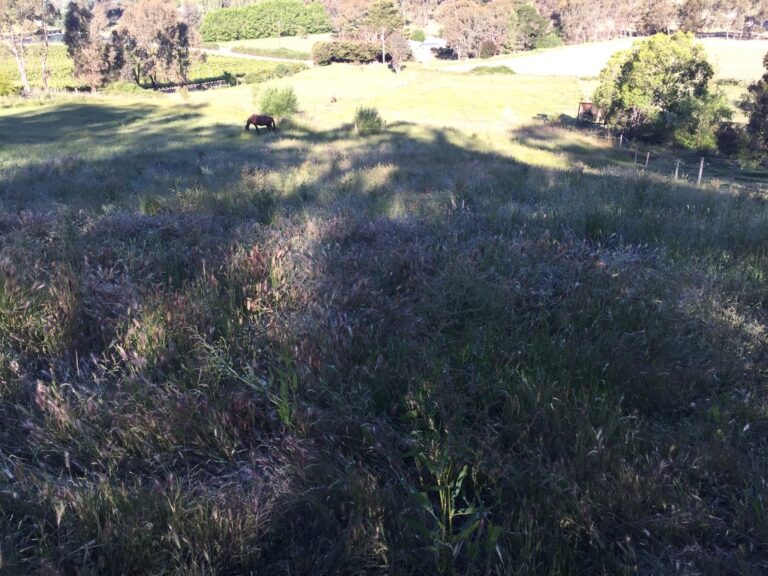

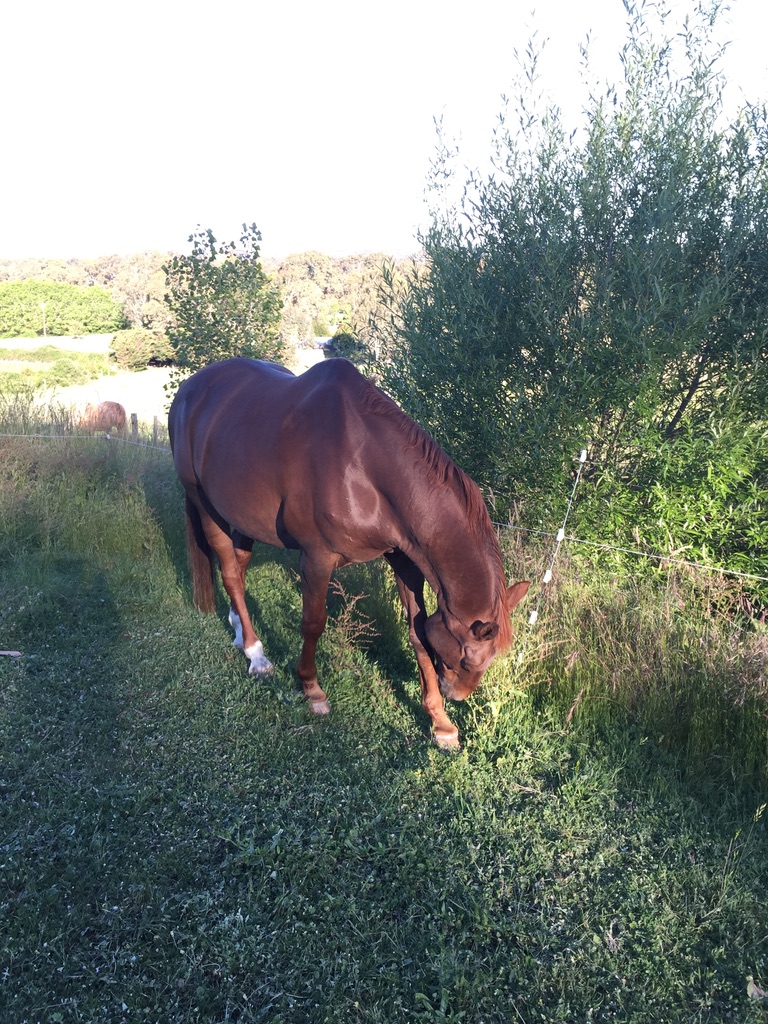




Thanks Anthea,
The photos really help to tell the story.